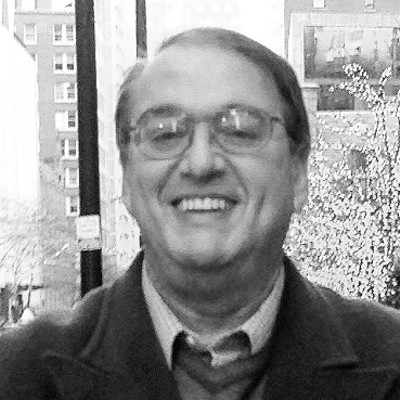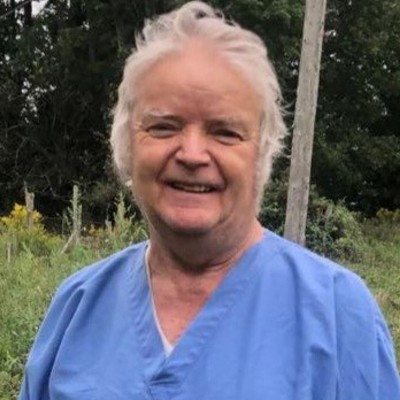To say it's been a hectic year for Arnie and Maggie Gundersen would be an understatement of nuclear proportions. In recent years, the Burlington couple and their firm, Fairewinds Associates, have become Vermont's go-to experts on the design, safety and reliability of the state's only nuclear facility, Vermont Yankee.
For a time, the Gundersens were in the Vermont press almost every day making revelations about, among other things, financial shortfalls in the plant's decommissioning fund. Not to mention that Entergy officials were woefully inaccurate in sworn statements about the "nonexistence" of underground pipes containing radioactive tritium. These eventually leaked into the Connecticut River.
Since March 2011, however, the Gundersens have focused nearly all their time, energy and resources on a different plant half a world away: Fukushima Daiichi. In the aftermath of the March 11, 2011, earthquake and tsunami that led to the world's worst nuclear disaster since the Chernobyl accident of 1986, the Gundersens were soon recognized by the international press as trusted and unbiased sources of information on what went wrong in Fukushima, and why. In short, the couple were able to cut with laserlike precision through many of the inaccuracies and falsehoods being spun by the Japanese government and Tokyo Electric Power Company (TEPCO), which owns Fukushima Daiichi.
Prior to that accident, the Gundersens' website received at most about 100 hits a day. Since March 2011, it has averaged 4000 hits per day, with traffic peaking at about 25,000 per day when key documents or videos about the disaster are released. In all, the site has logged more than 7.5 million viewers, and that number continues to grow.
Little surprise, then, that Arnie Gundersen is headed to Japan on February 17 for a weeklong tour promoting the couple's new book — written in Japanese — called Fukushima Daiichi: The Truth and the Way Forward. Says Gundersen, "This book is aimed at expanding the knowledge of people who really want to understand that what they’ve been told by Tokyo Electric and the Japanese government is just not correct."
Why is Gundersen, a retired Burlington High School physics and math teacher who doesn't speak a word of Japanese, considered an international expert on Japanese-built reactors? As he explains, Fukushima 1 is identical in design to the first plant he ever worked at as a nuclear engineer: Millstone 1 in Waterford, Conn., which was decommissioned in 1998. Fukushima 2 and 3 are identical in design to Vermont Yankee, a facility Gundersen knows inside and out. "So, both units that blew up [in Japan] I have experience on," he jokes.
From February 18 to 25, Gundersen will be in Japan — mainly in the Tokyo area — speaking to the media about the accident. As he explains, there's a real hunger among the Japanese people to "get the scientific record laid out correctly. Right now, about 80 percent of the Japanese people believe what the government tells them. It had been 100 percent. Over the last year, about 20 percent have begun to realize that the government and TEPCO have not been telling them the truth."
As Maggie Gundersen explains, she and her husband were approached last year by a Japanese publisher to work on the book, and were later provided with a Japanese-language author, Reiko Okazaki. Okazaki, who was born in Japan but educated in the U.S., came to Burlington with her editor for a week of extensive interviews.
The Japanese publishing house Shueisha specializes in interview-type books whose subjects range from Canadian environmentalist Helen Caldicott to the Dali Lama. Okazaki, 27, has previously authored five such books. Typically, these books run about 200 pages long, cost $9.99 and are small enough to fit in a pocket or purse to be read easily on Japan's mass transit. Fukushima Daiichi will be released on February 17 in Japan, with an English version due out later this year in the United States.
What's the gist of the book? Explains Arnie, Fukushima Daiichi was "not an accident. It was an accident waiting to happen.
"This was not a tsunami outside their understanding of what tsunamis are," he adds. "Fourteen years ago they had information that they were underprotected from a tsunami. In 2009 TEPCO and their regulator decided to ignore it."
As for the "way forward" in Japan, the book also discusses the country's promising options for moving away from nuclear power to safer and more reliable energy alternatives, especially geothermal. As Gundersen points out, the island nation has three-tenths of one percent of the world’s land mass but experiences 10 percent of the world’s earthquakes. "It gets 30 times more earthquakes per square foot of soil than any other place on Earth, yet we’ve decided to put 55 nukes there," he says. "There are alternatives here."
Open-source aerial photo of Fukushima 1 from April 17, 2011, courtesy of Digital Globe




Comments
Comments are closed.
From 2014-2020, Seven Days allowed readers to comment on all stories posted on our website. While we've appreciated the suggestions and insights, right now Seven Days is prioritizing our core mission — producing high-quality, responsible local journalism — over moderating online debates between readers.
To criticize, correct or praise our reporting, please send us a letter to the editor or send us a tip. We’ll check it out and report the results.
Online comments may return when we have better tech tools for managing them. Thanks for reading.